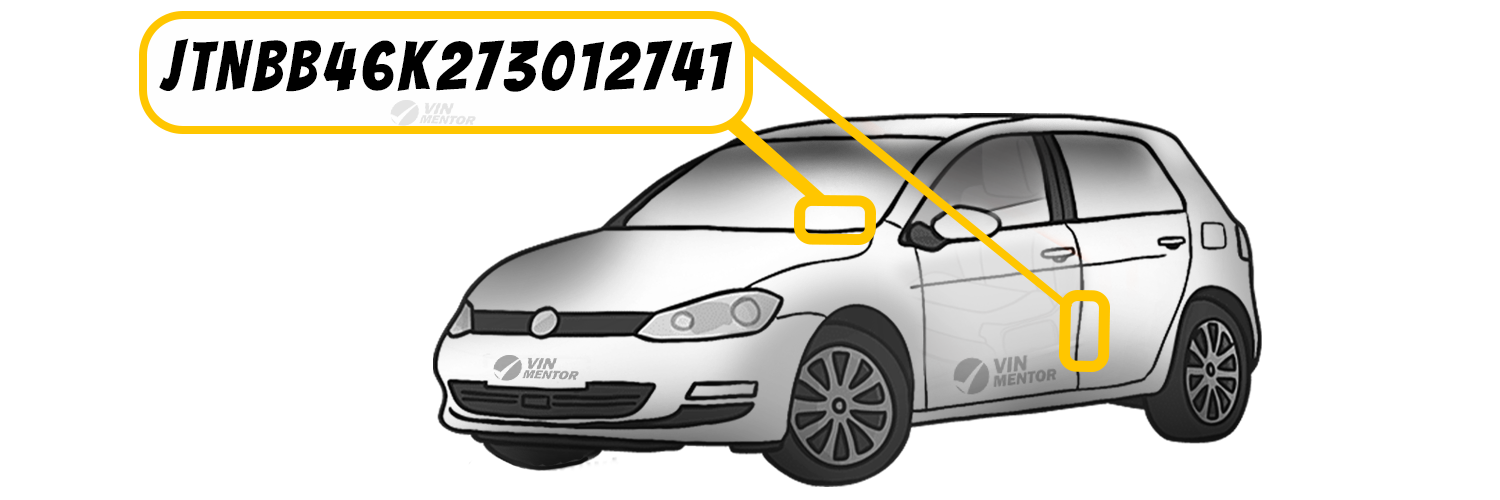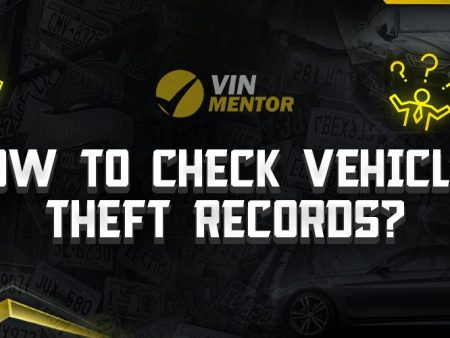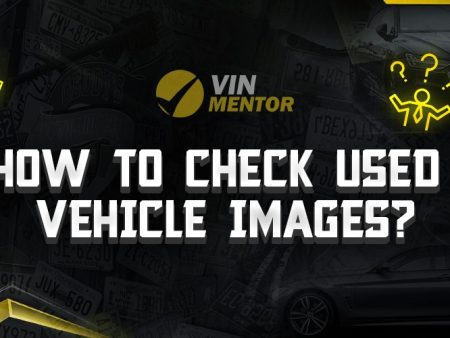

When you’re buying a car, it’s important to know the VIN. The VIN is the Vehicle Identification Number, and it’s a unique identifier for every car on the road. Knowing the VIN can help you make sure that you’re getting the exact car that you want, and it can also help you protect yourself from fraud. In this guide, we’ll show you how to find the VIN on any car, and we’ll also tell you what to do if you lose your VIN or if it gets damaged. Let’s get started!
Key Takeaways
- The VIN can be found in a few different places on a car, so it’s important to look around.
- The VIN is usually located on the dashboard on the driver’s side, but it can also be found on the door, window, engine bay, trunk, and other places.
- The most common place for the VIN on vehicles built after 1969 is the driver’s side dashboard.
- If you can’t find the VIN on the car itself, you can check the car’s documentation for it.
How to Find the VIN on Your Car?
VINs can be found in different locations on a car, depending on what year it was built and the manufacturer. VINs are often found on metal plates with stamped letters that are usually 1/4″ to 5/16” tall. In other places, they may be stamped into the metal.
The most common place is the driver’s side dashboard, near the bottom of the windshield, and there is usually one place on the vehicle’s frame where the VIN is stamped. If you’re trying to find the VIN on your car, try looking in one of these places first.
- The Dashboard. The dashboard is the most common place to find a VIN, and it can easily be seen through the windshield. The VIN is usually located on the lower left-hand side, close to where the dashboard and the windshield meet. If you’re looking for the VIN on a classic car manufactured before 1969, you might not find it on the dashboard.
- The Door Jamb. Modern vehicles commonly have a VIN sticker affixed to the doorjamb on the driver’s side, and in older cars, it can be a metal plate. This VIN sticker or plate may also contain other information, such as tire and loading information or the year and month of production. It may also have a scannable bar code or QR code on the sticker.
- The Engine Compartment. There are several places in the engine compartment where you can find a VIN plate. Sometimes, they are attached to the front of the engine block. It’s important to note that engines have a different number from the VIN. Some older vehicles have the VIN plate attached to the top of the radiator. Another common location is the driver’s side firewall, where the VIN may be stamped into the metal.
- Steering Wheel Column. Another common place for the VIN is the steering column, right below the steering wheel. This location is more common in older vehicles.
- On the Dashboard Below the Glove Box. Beneath the glove box is another common location on older vehicles, especially classic cars built before 1969.
- Under the Spare Tire. If your spare tire is located in the trunk, you can sometimes find the VIN stamped in the metal of the chassis beneath the spare tire.
- Rear Wheel Well. Sometimes the VIN can be found in the rear wheel well. Look up to see it directly above the tire.
What to do if you can’t Find VIN?
- Check the Vehicle’s Documentation. If you can’t find the VIN on your vehicle or your car is currently unavailable to you, you can find the VIN in the car’s documentation. VINs are required to be on titles, registration documents, and bills of sale. If you’re purchasing a used vehicle, you should check the following pieces of documentation to ensure that the VIN matches. They all need to match each other and the VIN on the car itself. Any discrepancies in the VIN number on these documents can cause a problem during registration and may even indicate fraud.
Here are some other places to look if you’re trying to find your VIN without your car.
- Title. The title is a legal document, and it is required to have the VIN on it. When you purchase a used car, you will receive a title. If you finance it, then a financial institution will hold the title.
- Bill of Sale. The Bill of Sale is another place to find the VIN. The VIN on the Bill of Sale must match the number on the title.
- Registration and Insurance. Your vehicle’s registration will also show your VIN. You can also find it on your insurance card.
- Service Records. Vehicle maintenance records should have the VIN number on them. These records can also help determine the vehicle’s history and find mileage fraud.
- Owner’s Manual. On newer vehicles, the owner’s manual will have the VIN printed on it.
- Hidden VIN Numbers. All modern vehicles have hidden VINs, and car manufacturers have started engraving the VIN on every major car component as an anti-theft measure. On older vehicles, manufacturers have stamped VINs in out-of-the-way places on the framework. You will only see these if you are a mechanic.
Can Anyone Remove VIN from Vehicle?
It’s Illegal to Remove a VIN Number. Removing a VIN number from a vehicle, whether it’s a plate or a decal, is a violation of federal regulations. States also have rules about tampering with VINs, which you could be subject to if you remove a VIN. Tampering with VINs carries up to 5 years in jail and a $250,000 fine.
In some cases, you can qualify for an exception if you are doing repairs to a vehicle or own a junkyard.
How to Verify Whether the VIN Is Authentic?
Once you have the car’s VIN, you can proceed to verify its authenticity in a few ways.
1. Check for wear and tear
If the VIN is located on the car itself, you should be able to see it without too much difficulty. If the number is hard to read or if it appears to have been tampered with in any way, that’s a red flag that the VIN might not be authentic.
2. Compare the VIN to other parts of the car
If you can find the VIN on other documentation, such as the title or registration, you can compare it to the one on the car itself. If they don’t match, that’s another sign that the VIN might not be real.
3. Check for a VIN decal
In some states, cars are required to have a VIN decal affixed to them. If the car you’re looking at doesn’t have one, that could be another indication that the VIN isn’t real.
4. Run VIN checkup
If you’re still unsure about the authenticity of the VIN, your best bet is to run a VIN check report. This report will tell you if the VIN is real, as well as provide other useful information about the car.
5. Get a professional inspection
If you’re still not sure whether the VIN is real, your best bet is to get a professional inspection. A qualified mechanic or car dealership should be able to tell you for sure whether the VIN is real.
TLDR
Final Thoughts
The VIN can be found in several locations on a vehicle, and depending on the year it was built, you might need to search for the VIN. You can also get a professional VIN inspection if you’re worried about the authenticity of the vehicle’s VIN number.
Purchasing a car is a big decision, and it can be stressful to worry about the details. For peace of mind, we recommend using a top-rated VIN check websites to obtain a complete vehicle history report on any vehicle you are considering for purchase.













